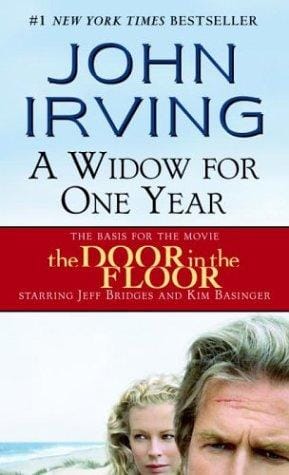Exploring John Irving’s “A Widow for One Year”: Themes, Characters and Legacy
Explore John Irving’s novel “A Widow for One Year,” its plot, themes and lasting impact, in this concise guide to characters, structure and literary significance.

Introduction to ‘A Widow for One Year’
First published in 1998, John Irving’s novel “A Widow for One Year” stands as one of his most layered and emotionally resonant works. Blending tragedy, dark comedy and a deep examination of family relationships, the book follows its characters across four decades and two continents. For readers who appreciate expansive storytelling, memorable characterization and a fearless look at grief, sexuality and artistic ambition, Irving’s story continues to feel fresh more than two decades after it first appeared on best-seller lists.
Plot Overview Without Spoilers
The novel opens in the summer of 1958 in the Long Island town of East Hampton, where four-year-old Ruth Cole witnesses a single night that will echo throughout her life. The events of that evening propel her parents, noted children’s author Ted Cole and his wife Marion, into a spiral of loss that eventually shatters their marriage. Irving then leaps ahead to 1990, portraying Ruth as a successful writer confronting her own loneliness, and concludes in 1995 when past and present collide in Amsterdam. This sweeping structure allows readers to experience the reverberations of one family’s defining trauma.
The Three-Part Structure
Irving divides the narrative into three distinct sections—childhood, early adulthood and mature adulthood—mirroring the growth of Ruth’s consciousness. Each part is almost a short novel in itself, with its own tone and pacing. Together, they create a mosaic of interconnected scenes in which characters age, relocate and reinvent themselves while still carrying the same unanswered questions. The structure also underscores the idea that healing rarely happens in a straight line; instead, it unfolds in fits and starts over years.
Key Themes That Resonate
Irving’s fiction is famous for juggling big ideas with intimate detail, and “A Widow for One Year” is no exception. The book navigates grief, sexual awakening, artistic creation, and the complicated ways parents imprint their fears and hopes on children. Its thematic breadth invites multiple readings, making it a favorite for book clubs and literature courses alike. At its heart, the story asks whether people can truly move beyond calamity or whether they simply learn to live beside it.
Loss and Renewal
The deaths that occur before the novel begins cast a long shadow over every chapter. Yet Irving resists a purely bleak outlook. He shows how characters reinvent themselves through writing, parenthood and, in some cases, new love. The juxtaposition of fatal accidents with scenes of artistic birth highlights the paradoxical nature of renewal: something devastating must often end before something unexpected can start.
The Burden of Memory
Photographs, children’s books and even physical spaces become contested sites of remembrance. Ted’s vocation as an illustrator forces him to revisit the past daily, while Marion’s decision to disappear represents an opposite, though equally obsessive, reaction. For Ruth and Eddie O’Hare—the teenage assistant who grows into a middle-aged writer—the challenge is to honor memory without allowing it to dictate their futures.
Main Characters and Their Arcs
Irving populates the novel with characters who feel startlingly real, complete with quirks that oscillate between humorous and heartbreaking. Their evolving relationships illuminate how people both harm and heal one another, often simultaneously.
Ruth Cole
Gifted, guarded and fiercely independent, Ruth spends much of her life mining personal pain for literary material. Her trajectory raises questions about the ethics of storytelling: how much of one’s own history—or someone else’s—can be turned into art? Her eventual confrontation with her absent mother becomes the linchpin for personal growth.
Eddie O’Hare
Introduced as a sixteen-year-old infatuated with Marion, Eddie becomes a witness to both Ted’s seductions and Ruth’s formative years. His lifelong commitment to writing children’s books, modeled after Ted’s career, reveals the seductive pull of mentorship and the dangers of living in someone else’s creative shadow.
Ted and Marion Cole
Ted’s flamboyant charisma cloaks a hollowness he refuses to acknowledge, while Marion’s withdrawal is as loud as Ted’s antics. Their marriage, wrecked by grief yet sustained by habit, dramatizes how two people can respond to the same tragedy in diametrically opposed ways. They form the emotional scaffolding that shapes Ruth and Eddie.
John Irving’s Narrative Craft
Irving’s signature tools—omniscient narration, circular plot devices and moments of shock—are on full display. He balances multiple timelines and perspectives with deceptively effortless prose, guiding readers through a maze of coincidences that feel both fated and entirely plausible. His willingness to depict sexuality candidly serves character development rather than titillation, reinforcing how intimate encounters can define or distort identity.
Impact on Contemporary Literature
“A Widow for One Year” arrived during a period dominated by minimalist fiction, and its sprawling scope reminded critics of the pleasures inherent in maximalist storytelling. The novel’s success paved the way for other multi-decade family sagas in mainstream publishing. Its adaptation into the 2004 film “The Door in the Floor” further cemented its status, introducing new audiences to Irving’s singular voice.
Final Thoughts
More than two decades after its release, “A Widow for One Year” endures because it captures universal experiences—mourning, desire, creation—through idiosyncratic lives. Whether you are approaching the novel for the first time or revisiting it with fresh eyes, Irving’s exploration of how wounds transform into stories offers both comfort and challenge. In a culture still negotiating the balance between remembering and moving forward, the book feels as urgent as ever.



